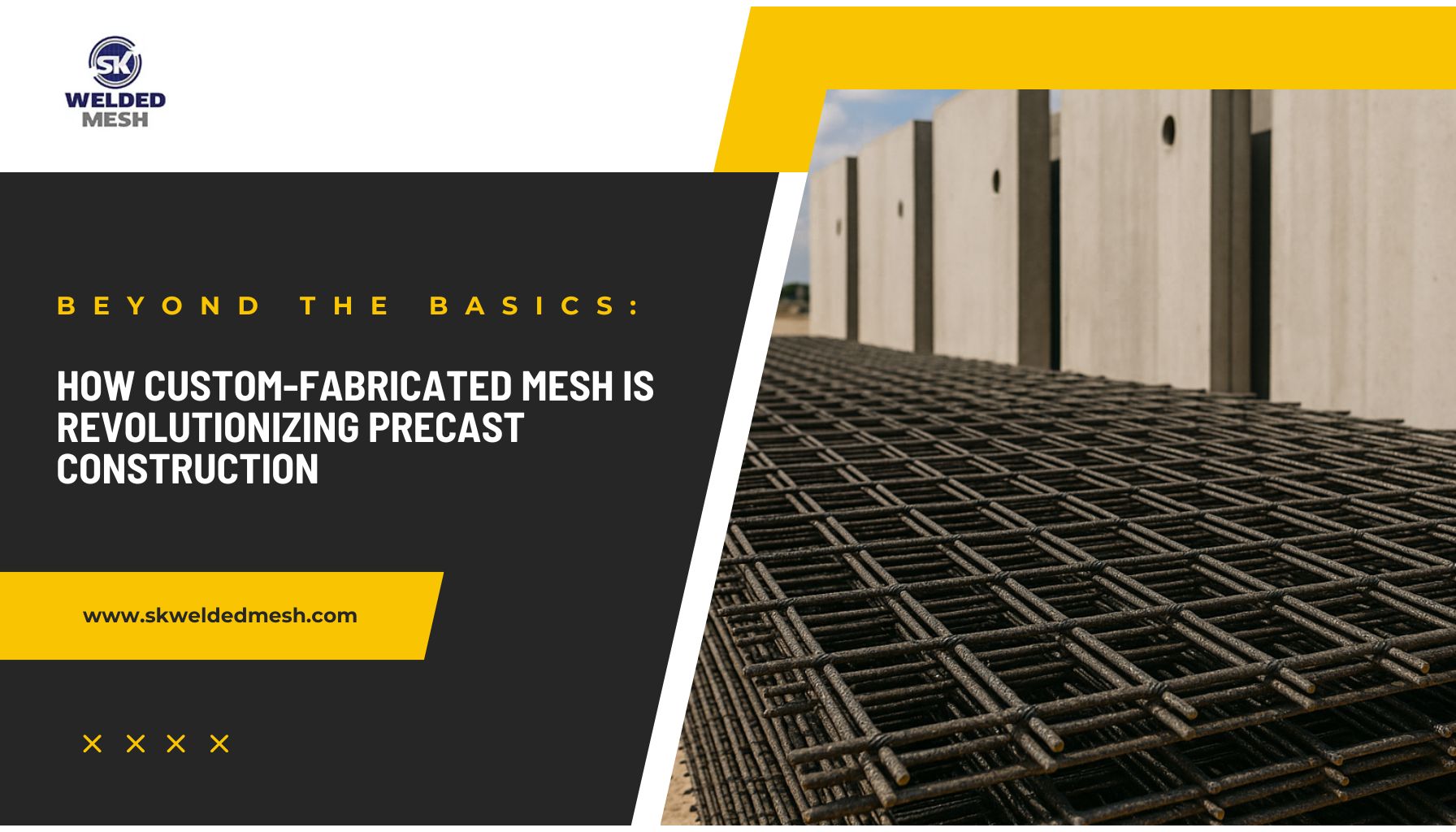

Speed drives precast. Each day is mapped out. Each delay sets off a chain reaction. That’s what makes coordination so critical, especially when it comes to reinforcement.
Still, many sites continue working with mesh that arrives in bulk, sized to general specs. Crews roll it out, trim the edges, and try to make it fit into the mold.
Some days that works. Some days it throws off your whole pour window. That’s where custom-fabricated mesh shifts the outcome. It comes shaped to your forms. No fixing, no fudging. You place and pour.
Most molds are not perfect boxes. You know that if you’ve ever had to bend mesh around a drain sleeve or notch it around a utility channel.
That trimming takes time—and when rushed, it weakens coverage where you need it most.
Custom-fabricated mesh is different. You send exact panel outlines. The shop sends back mesh that mirrors them. Even small jogs and offsets are handled upfront. So what you get, fits. No back-of-truck reshaping. No mid-pour adjustments with rebar cutters.
Every bend you handle onsite adds a step your team needs to manage.
You’ve probably seen someone at the edge of the slab, lining up wire over a jig, re-checking the angle, shifting it again. It works, sure—but it eats up your morning.
With pre-bent mesh, those shapes show up ready. U-channels, Z-bends, step panels—already bent, already measured.
The form team drops them in and moves on. That’s how you finish pours by noon instead of pushing them into the evening.
Out in the field, variables pile up. Rain, dust, uneven ground. In a factory, none of that gets in the way.
The mesh is welded by machines tuned for accuracy. Every joint meets exact spacing. Every panel holds its shape.
That consistency matters when you’re pouring high-stress components or lining up mesh in tight formwork. You save time aligning.
You avoid clashes with embedded hardware. And over a series of pours, you start seeing fewer callbacks and touch-ups. The difference builds over time, not just in one pour.
Cutting mesh wastes more than time. Every offcut goes into the skip, and those skips cost money. On a large job, that extra volume adds up fast.
With custom-fabricated mesh, what you receive is what you need. Nothing extra. No roll-ends to clean up. No piles of unusable wire. You’re using mesh the way it was meant to be used: once, in the right shape, without waste.
This shift in material planning helps you budget more accurately. You also avoid the last-minute panic that comes from realizing you’re short on usable mesh two hours before a pour.
Managing hundreds of mesh panels can get messy. Custom orders come tagged and labeled. You know which one goes where.
Here’s what that unlocks for your team:
This kind of clarity saves time. It keeps your crew moving without the back-and-forth of sorting mismatched panels.
When mesh matches the form, everything else follows more smoothly—pour times, placement accuracy, and structural reliability.
That’s the edge custom fabrication brings to precast workflows. We’ve supported teams that build tunnel linings, housing slabs, bridge decks, and more with mesh that lands ready to go.
If you’re thinking about taking your reinforcement a step further, our process is built to support you right from the drawings.